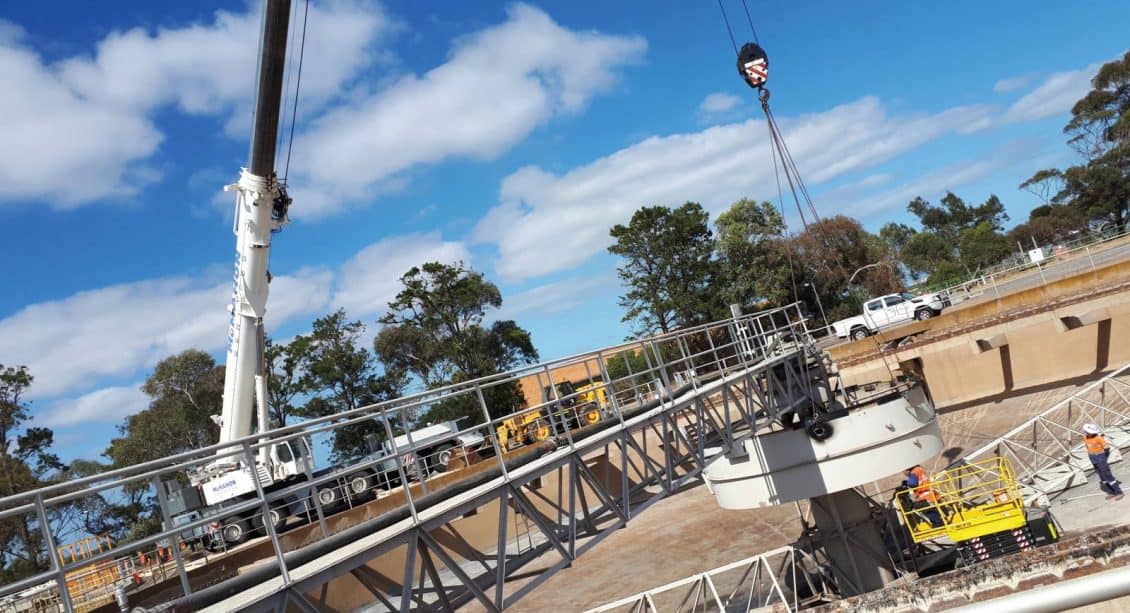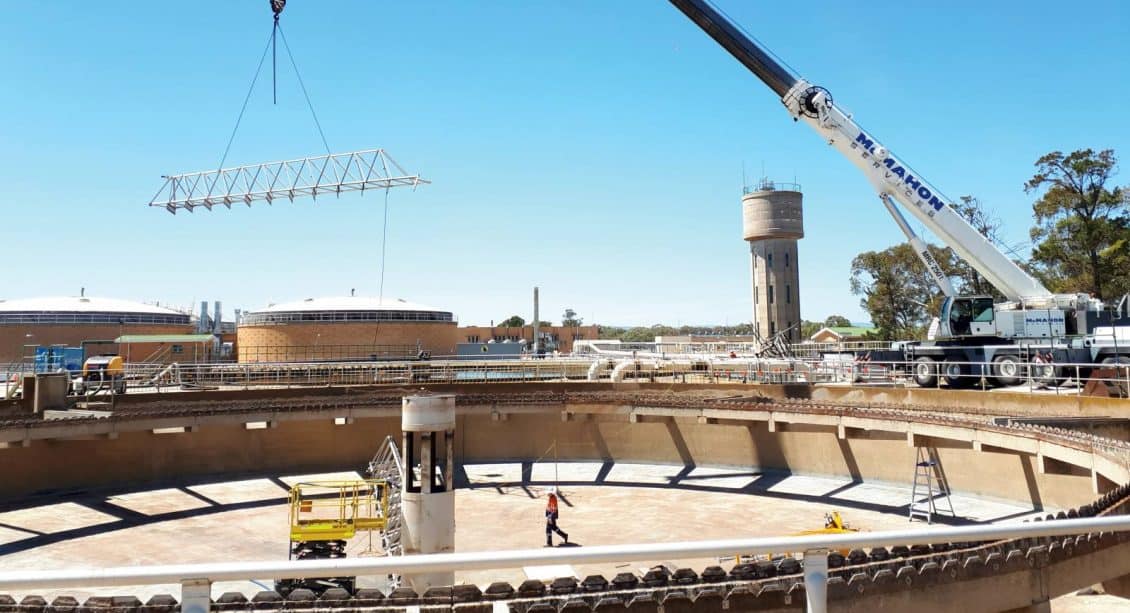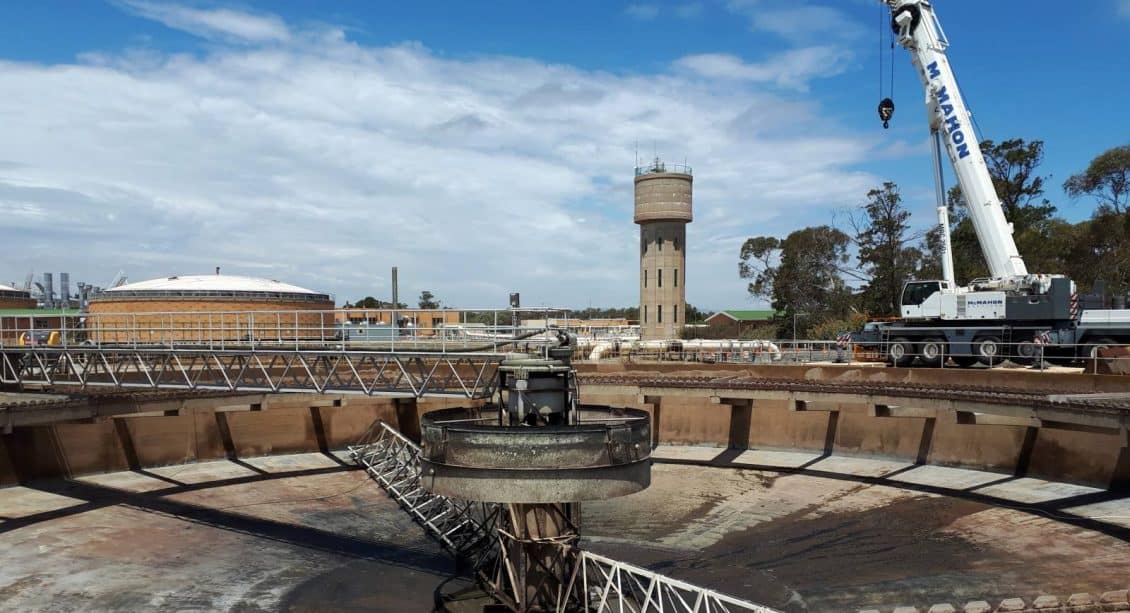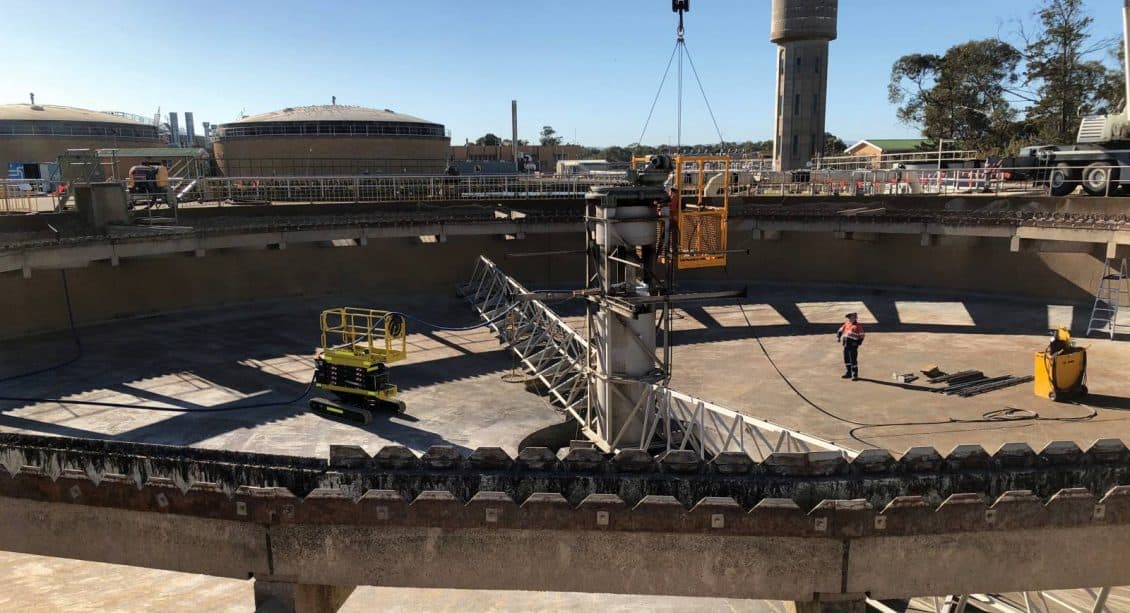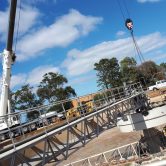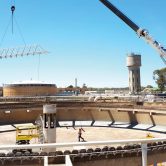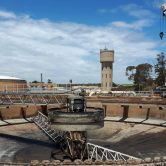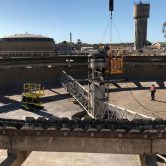Project Overview
Originally built and operational in 1966, the Bolivar Wastewater Treatment Plant located in the northern suburbs of Adelaide treats up to 470ML/day of wastewater. The treatment process comprises screens and grit removal, primary sedimentation tanks, activated sludge bioreactors, secondary clarifiers and polishing lagoons. Treated wastewater is discharge via 11km outfall open channel to coastal marine waters at St Kilda north of the plant. Other treated water is used for irrigation of market gardens after treatment through the Bolivar Dissolved Air Flotation and Filtration (DAFF) plant. After additional chlorination, other water is supplied to a dual reticulation network at Mawson Lakes.
In 2018, SA Water identified the need for major upgrades to the internal mechanical scraper mechanism for eight clarifiers at the plant. One clarifier was upgraded in a trial process and the methodology proved successful. McMahon Services were then engaged by Head Contractor Waternish Engineering Pty Ltd as part of the remaining clarifier upgrade works.
Scope of Work
The Bolivar Wastewater Treatment Plant clarifiers were constructed in 1966 with the original plant. Clarifiers are settling tanks built with mechanical means for continuous removal of solids being deposited by sedimentation. It removes solid particulates or suspended solids from the wastewater with concentrated impurities discharging from the bottom of the tank known as sludge, while the particles that float to the surface of the liquid are called scum.
The Bolivar Plant clarifiers were of reinforced concrete construction cast in situ and included 50mm levelling screeds and expansion and construction joints. Works comprised the upgrading of seven clarifiers and installing a new clarifier mechanism. Each clarifier is approximately 45m in diameter with two scraper arms.
The project team commenced works with high pressure water cleaning and hydro demolition of internal concrete structure and removal of debris using large vacuum recovery unit.
The next steps were the mechanical decommissioning of scraper arm, gearbox and associated mechanisms, followed by the demolition of mechanical and civil structures.
Decontamination of asbestos containing materials in the internal launder and weir plate joints were undertaken next. The project team worked closely with the client to ensure all asbestos was identified, recorded and subsequently removed and disposed of offsite at EPA licenced receiving stations. Stringent control measures were implemented to control airborne dust to mitigate any effect on adjoining facilities.
Other demolished materials included scrap metal which was cleaned and recycled off site.
Concrete remediation works were undertaken on the following elements of the clarifiers: screeds, structural wall joints, cantilever tie-in beams, radial channel infills and the protective surface coating of outer launder.
Internal scaffolding was erected on a continuous basis to allow work crews ease of access to the clarifiers during the works.

